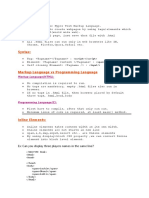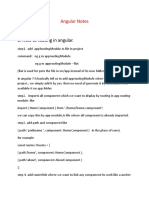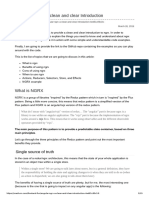0% found this document useful (0 votes)
127 views35 pagesSubscribe To Deepl Pro To Edit This Document.: Visit For More Information
TypeScript is a programming language that adds static typing to JavaScript. It allows developers to create robust web applications in JavaScript. TypeScript endows JavaScript with additional features that make code less buggy, simpler, more consistent, and easier to test. TypeScript code is compiled to plain JavaScript.
Uploaded by
Leo RSCopyright
© © All Rights Reserved
We take content rights seriously. If you suspect this is your content, claim it here.
Available Formats
Download as PPTX, PDF, TXT or read online on Scribd
0% found this document useful (0 votes)
127 views35 pagesSubscribe To Deepl Pro To Edit This Document.: Visit For More Information
TypeScript is a programming language that adds static typing to JavaScript. It allows developers to create robust web applications in JavaScript. TypeScript endows JavaScript with additional features that make code less buggy, simpler, more consistent, and easier to test. TypeScript code is compiled to plain JavaScript.
Uploaded by
Leo RSCopyright
© © All Rights Reserved
We take content rights seriously. If you suspect this is your content, claim it here.
Available Formats
Download as PPTX, PDF, TXT or read online on Scribd
/ 35

























































































